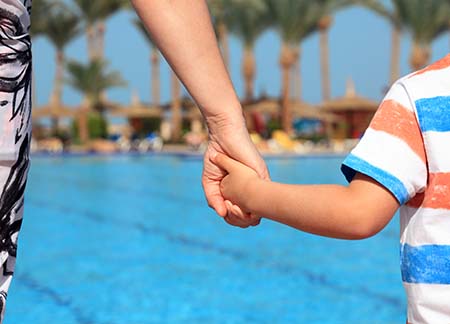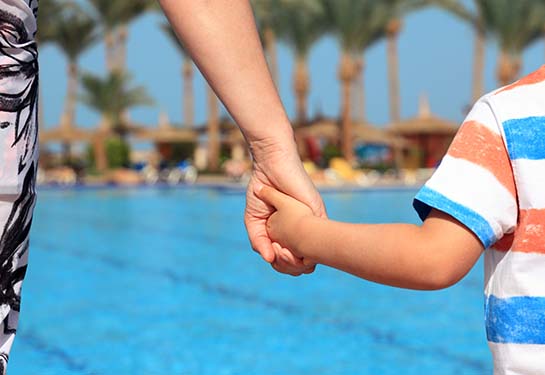Triple-digit heat calls for water safety
Pediatricians stress the importance of fencing around swimming pools
It’s one of those routine mornings where you’ve dropped off your eldest at school and are now cleaning up breakfast dishes. You are a mom; therefore, mental checklists are engrained in your own being. Starting dishes… check. Baby Ella in highchair… check. Charlie sitting and coloring… check.
Baby Ella starts crying and you see the dog licking up the last of her breakfast off her face. You quickly attend to her. Back to the checklist. Baby Ella… check. Charlie… not check?! He’s not there but before you can process you hear the dog barking outside. You quickly go through the open backdoor. Your heart stops. Charlie is floating face down in the pool.

Pediatricians see this story play out all too frequently.
Although splashing in pools is a great way to cool off as summer approaches – especially these days of triple digit weather – it also poses significant risks. In fact, drowning is the leading cause of death in children ages 1-4, and the second leading cause of death in children ages 5-9.
But adolescents are at risk too! It only takes 2 inches of water for a child to drown, so by preschool age, any unsupervised unrestricted body of water can be fatal. Many deaths from drowning are preventable, which is why we as pediatricians call for greater awareness regarding pool fencing and enclosures.
Pool fences are the solution to accidental drownings in backyards. They are also the only proven safety measure to prevent accidental drownings – even more effective than pool alarms or pool covers. With the following characteristics in mind, your child is sure to be happy and healthy all summer long, only playing in the pool when there is direct adult supervision.
Here are some effective characteristics of pool fences:
- At least 4 feet high and completely surround the pool, separating it from the house as well as the rest of the yard
- Climb proof, that includes nothing up against the fence that the child can climb onto, the design can’t have something that can serve as “hand/foot holds”
- The slats should be close together with no more than 4 inches of space between
- The fence should have a self-closing and self-latching gate that only opens out, away from the pool area
- The gate latch should be out of a child's reach—at least 54 inches from the ground
With a secure pool fence, Charlie, and the other 350 children who die annually from pool drownings, may still be alive today.
While legislation requiring pool fences for newly built pools is a start, all families also need to be aware a compliant pool fence is essential in all homes where your child spends time.
In addition, we must remember that a secure fence does not replace the importance of practicing “touch supervision” by keeping swimming children within arm's reach and in sight at all times.
As we head into summer in Sacramento, it’s a perfect time to re-visit this life saving measure and ensure your pool is ready.
This article was written by UC Davis Department of Pediatrics Residents Sara Brundage, Becca Lynch and Eliza Matley.




